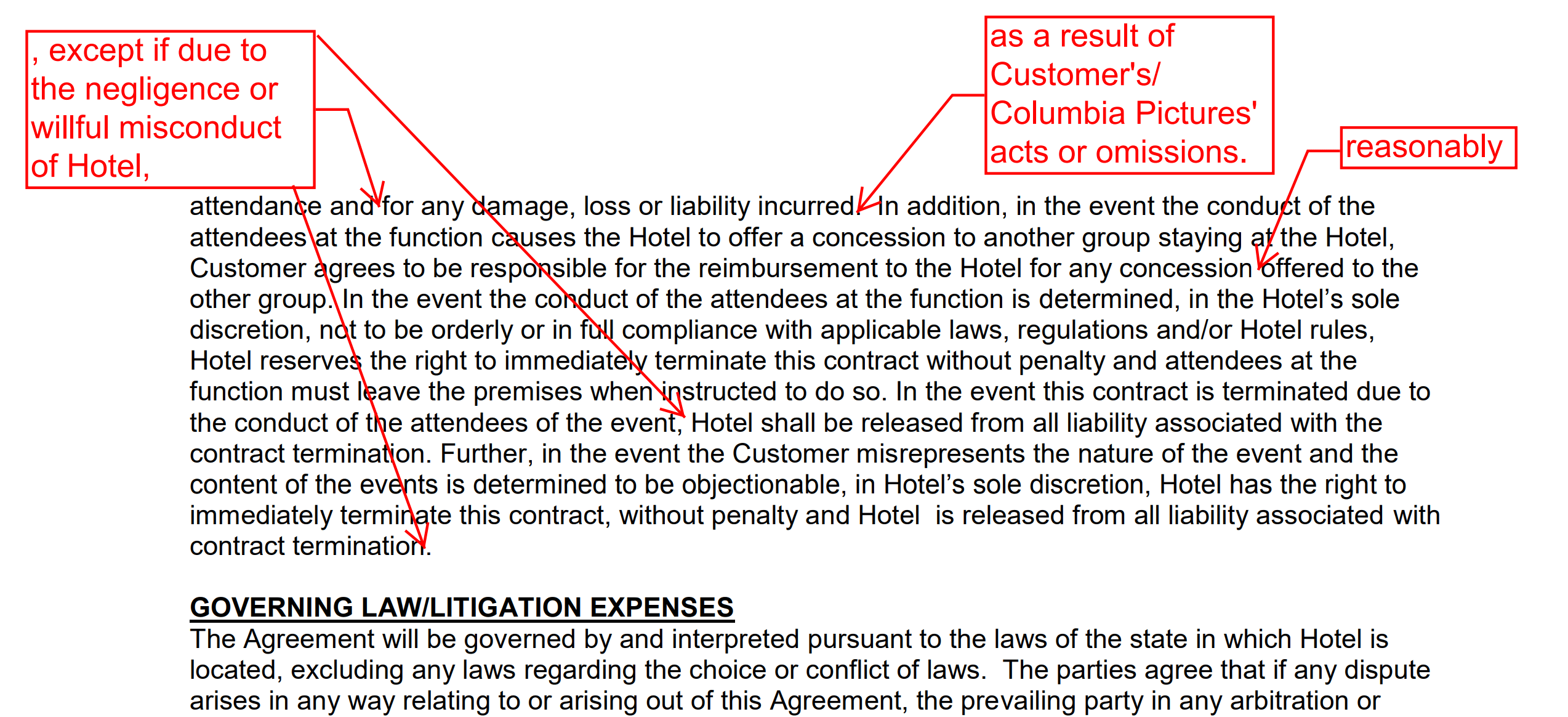 The image above is from a hotel agreement I examined as part of my LegalSifter duties. It caused me to wonder how people go about making final changes to the signature copy of a contract. What are the alternatives, apart from marking changes by hand? It’s been forever since I last did a deal, so I have no idea. Specifically, how were the markings in that hotel agreement made?
The image above is from a hotel agreement I examined as part of my LegalSifter duties. It caused me to wonder how people go about making final changes to the signature copy of a contract. What are the alternatives, apart from marking changes by hand? It’s been forever since I last did a deal, so I have no idea. Specifically, how were the markings in that hotel agreement made?
And presumably having a printed version that expresses the deal is preferable to marking changes. What are the circumstances that make marking changes a legitimate option?

I wouldn’t want to introduce the ambiguity. I’d either go back and make the changes to the original, to prepare a new signature copy, or incorporate the changes into an amendment, to be execute simultaneously with the original.
If you meant your question literally, then they appear to have been made on a PDF of the final contract page. This was probably so as not to knock off the pagination of the original. But if the parties didn’t initial that changed page, there might be trouble ahead later in proving it was in fact part of the signed document.
Thanks!
In view of how easy it is today to revise a Word document, and since one or the other of those two parties has access to the Word document (don’t get me started on deals where one party refuses to let the other side have access to the Word version and insists on only sharing PDF…), I can’t imagine any good reason to do what’s shown above in a signature draft. This isn’t 1957 anymore, is it? (And, as Vance notes, if you’re going to revert to 1957, then you also have to follow the norms of the time and have initials by all of those amendments, right?)
if both parties agree and there was just some oversight that needs to be corrected, or even a new substantive item, but you’re in a big hurry and can’t re-execute the document, I will make changes in word and swap out entire pages, with the written email written consent of the other side. just to document that they agreed to the change after they signed it. for us this only happens before it is executed by my client (a city govt.) I would not do this if both sides had already signed. And, I only do this for contracts where the stakes aren’t too high.
Pen and ink changes to edit dates and clerical errors are fine, with each party’s initials, dated. I wouldn’t attempt anything more complex that that in this manner, however. An amendment drafted via track-changes would be in order concerning the latter scenario.